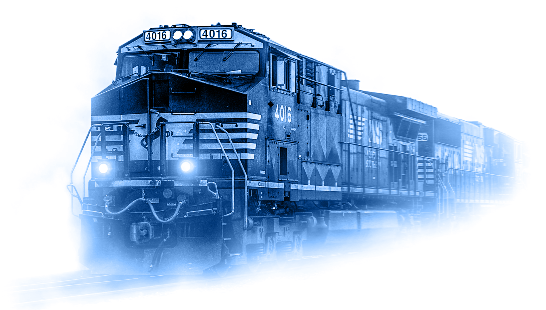Entre em Contato
555-555-5555mymail@mailservice.com
RFID Tags in Train Operation – Loading and Unloading cargo. Everything you need to know!
Radio-Frequency Identification (RFID) tags, particularly in the context of Automatic Equipment Identification (AEI) for rail cars, offer various advantages in the loading and unloading of cargo. Here are 20 major advantages:
- Automated Tracking: RFID tags enable automated tracking of rail cars, providing real-time visibility into their location and status.
- Efficiency: Streamlines the loading and unloading process, reducing manual labor and increasing overall operational efficiency.
- Data Accuracy: RFID technology ensures accurate data capture, minimizing errors associated with manual data entry.
- Speed and Throughput: Faster identification and processing of rail cars lead to increased throughput and reduced dwell times at loading and unloading facilities.
- Inventory Management: Facilitates accurate and real-time inventory management, helping operators keep track of the cargo on rail cars.
- Asset Visibility: Enhances overall asset visibility by providing instant access to information about each rail car in the system.
- Security: Improves security by enabling the monitoring of rail car movements and ensuring that only authorized personnel access certain areas.
- Reduced Downtime: Minimizes downtime during loading and unloading processes by expediting the identification and handling of rail cars.
- Data Integration: RFID systems can be integrated with other management systems, such as Enterprise Resource Planning (ERP) or Warehouse Management Systems (WMS), for seamless data exchange.
- Maintenance Tracking: Allows for the tracking of maintenance schedules and history for each rail car, optimizing maintenance processes.
- Remote Monitoring: Enables remote monitoring of rail cars, providing valuable insights even when they are in transit.
- Supply Chain Visibility: Enhances overall supply chain visibility by providing accurate and timely information on the movement of goods.
- Regulatory Compliance: Helps in meeting regulatory requirements related to cargo tracking and transportation.
- Error Reduction: Reduces the likelihood of errors in cargo identification, leading to improved accuracy in the loading and unloading process.
- Asset Utilization: Optimizes the utilization of rail assets by providing insights into their availability and usage patterns.
- Predictive Analytics: Data collected from RFID tags can be used for predictive analytics, allowing for proactive decision-making and planning.
- Improved Billing and Invoicing: Accurate and automated tracking of cargo facilitates precise billing and invoicing processes.
- Enhanced Safety: RFID technology contributes to the overall safety of operations by reducing the chances of accidents and ensuring compliance with safety protocols.
- Environmental Impact: Optimizes transportation routes and resource usage, contributing to a reduction in the environmental impact of rail operations.
- Cost Savings: Overall, RFID implementation leads to cost savings through increased efficiency, reduced errors, and better resource utilization
How to get important measures from the RFID automation?
After installing an RFID AEI (Automatic Equipment Identification) management system in a cargo loading area, there are several key measures you can focus on to improve processes, reduce timing, and cut costs. Here are some important measures and ways to utilize them:
Throughput Rate:
- Measure: Track the number of rail cars processed per unit of time.
- Utilization: Identify bottlenecks and inefficiencies, and optimize workflows to increase throughput.
Dwell Time:
- Measure: Monitor the time rail cars spend in the loading area.
- Utilization: Minimize dwell time by streamlining processes, improving efficiency, and addressing any identified delays.
Accuracy of Data Capture:
- Measure: Assess the accuracy of data captured by the RFID system.
- Utilization: Regularly audit and calibrate the RFID system to ensure accurate data, reducing errors in cargo identification and processing.
Operational Efficiency:
- Measure: Evaluate the overall efficiency of loading and unloading operations.
- Utilization: Implement process improvements, such as optimizing layout, staffing levels, and equipment utilization, to enhance overall efficiency.
Arrival and Departure Times:
- Information: Record the exact arrival and departure times of each rail car.
- Utilization: Analyze the data to identify patterns, optimize scheduling, and reduce dwell times.
Cargo Identification:
- Information: Capture information about the type and quantity of magnesium cargo on each rail car.
- Utilization: Use this data for accurate inventory management, resource planning, and meeting customer demand.
Loading and Unloading Times:
- Information: Track the duration of loading and unloading processes for each rail car.
- Utilization: Identify inefficiencies, optimize workflows, and reduce turnaround times.
Capacity Utilization:
- Information: Monitor the percentage of cargo capacity utilized in each rail car.
- Utilization: Optimize cargo distribution to maximize capacity and reduce the number of partially loaded rail cars.
Asset Tracking:
- Information: Use RFID to track the location and movement of rail cars within the loading area.
- Utilization: Improve asset visibility, streamline yard management, and prevent congestion.
Integration with Mine Systems:
- Information: Integrate RFID data with other mine systems, such as ERP or production planning.
- Utilization: Achieve seamless information flow, improve coordination between departments, and enhance overall mine operations.
Contact Us




1501 Venera ave Suite 320A Coral Gables, FL 33146
+55 11 985974011 (Brazil)
+1 614 302 1900 (USA)
Intertech Rail 2024 - All Rights Reserved







